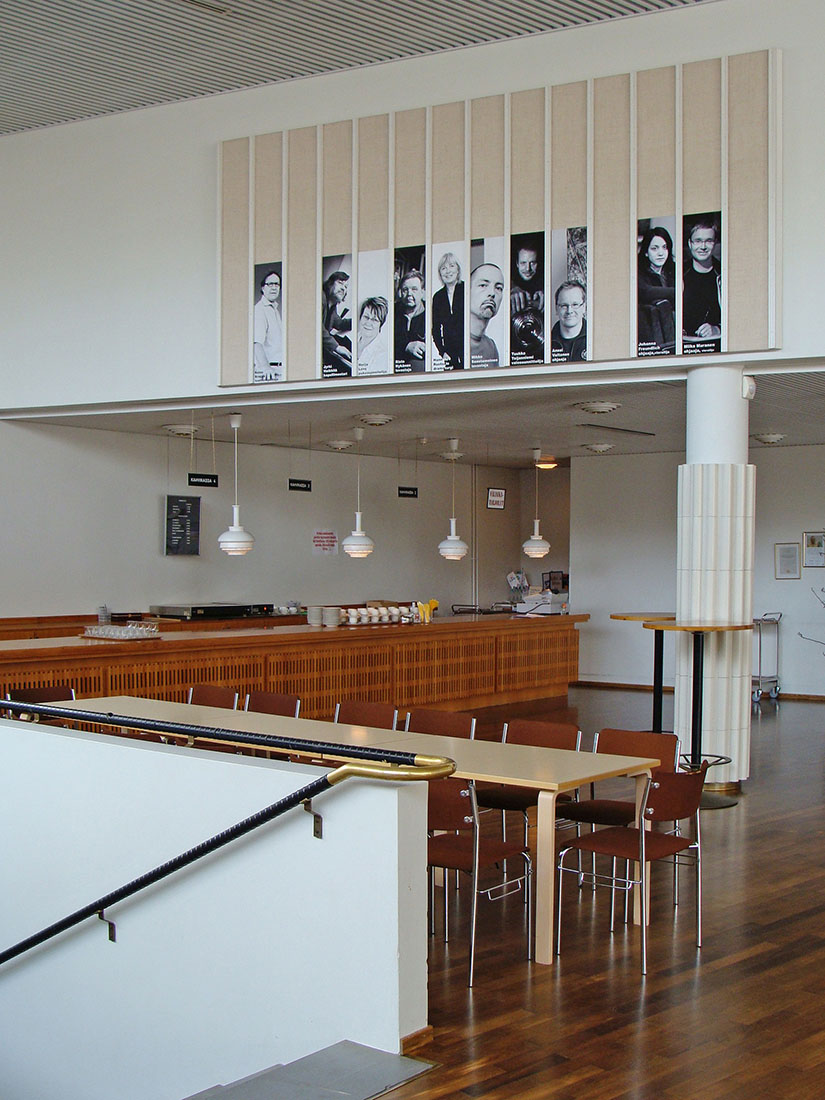 |
 |
 |
 |


Jyväskylä City Theatre
Vapaudenkatu 36, Jyväskylä
1964 - 1982
In 1964 Alvar Aalto designed an administrative and cultural centre for the small finnish town Jyväskylä. As several finnish towns of comparable size, Jyväskylä was developed within a rectangular grid of streets. The urban plan by Alvar Aalto occupies an entire block. A new city administration, which was envisioned as an expandable building, was connected to the existing town hall. The assembley hall was imagined by Alvar Aalto as a constrasting and dominating vertical volume located on the large town square. The theatre, at this time intended as a large multifunctional hall, was also planned to be located at the town square. The town square is elevated above the existing level of a small park, emphasizing its role as a pedestrian area. The police headquarter was planned as a further component of this city block, arranged on the edge, running along a road. The urban plan for the Jyväskylä administrative and cultural centre was reworked and refined several times. The first stage was realized from 1976 to 1978, but the theatre was finished only in 1982. Unhappily the assambley hall was never realized as intended.
The main entrance to the theatre is made from the street level. On the ground floor are to be found the counters, warderobe and reception area. From there one ascends to the first floor, where is located the foyer opening towards the street and park by large windows. Additionally the foyer is connected to an exterior terrace. While the foyer area and the serving spaces are covered by a flat roof, the theater space is recognizable from the exterior by the vaulted roofs. In this layout the horizontal roofs appear like a plinth for a plastic compositon of the vaulted volumes. The façades of the Jyväskylä Theatre are clad with the Aalto-typical profiled white ceramic tiles.